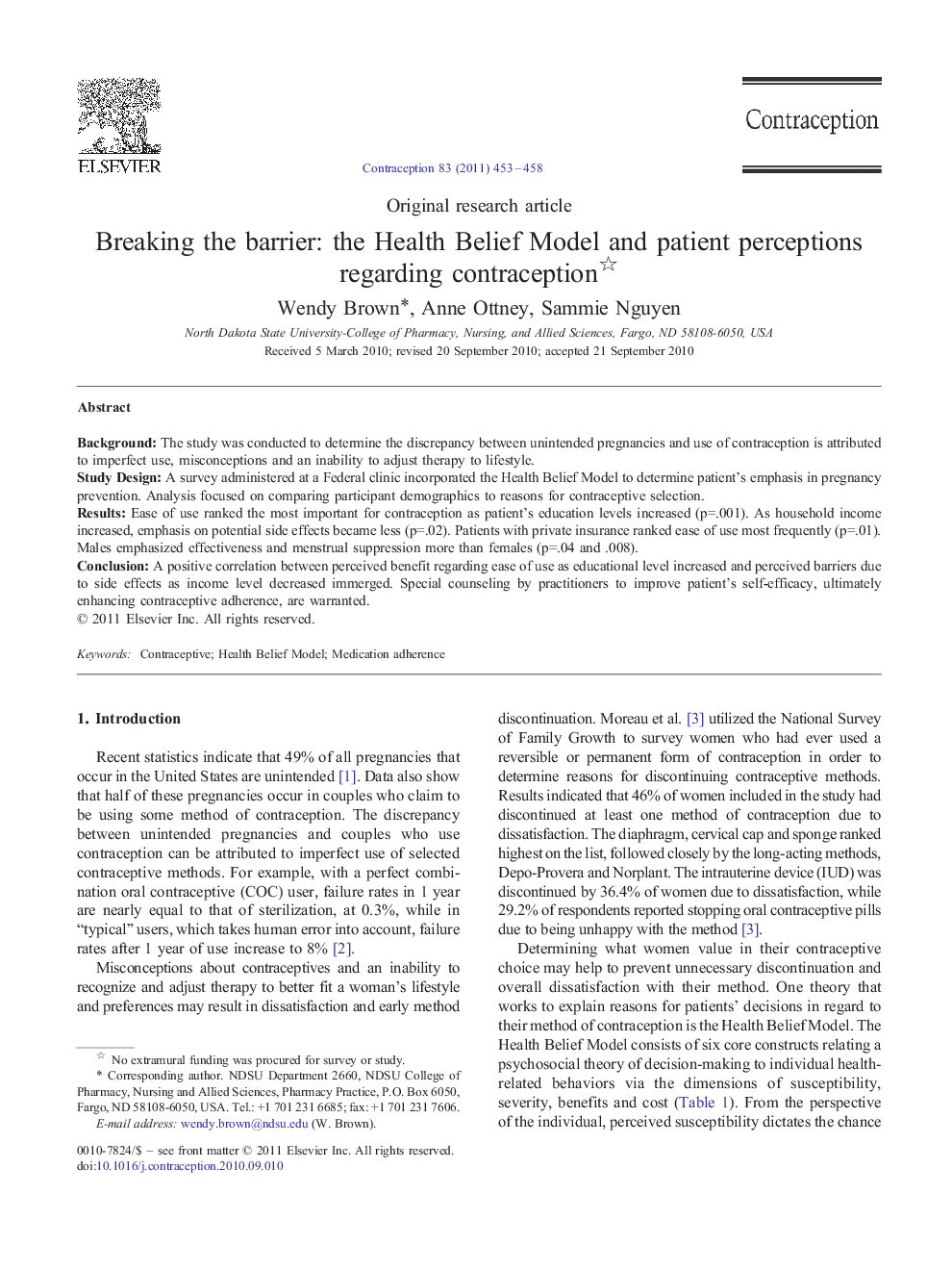| Article ID | Journal | Published Year | Pages | File Type |
|---|---|---|---|---|
| 3914056 | Contraception | 2011 | 6 Pages |
BackgroundThe study was conducted to determine the discrepancy between unintended pregnancies and use of contraception is attributed to imperfect use, misconceptions and an inability to adjust therapy to lifestyle.Study DesignA survey administered at a Federal clinic incorporated the Health Belief Model to determine patient's emphasis in pregnancy prevention. Analysis focused on comparing participant demographics to reasons for contraceptive selection.ResultsEase of use ranked the most important for contraception as patient's education levels increased (p=.001). As household income increased, emphasis on potential side effects became less (p=.02). Patients with private insurance ranked ease of use most frequently (p=.01). Males emphasized effectiveness and menstrual suppression more than females (p=.04 and .008).ConclusionA positive correlation between perceived benefit regarding ease of use as educational level increased and perceived barriers due to side effects as income level decreased immerged. Special counseling by practitioners to improve patient's self-efficacy, ultimately enhancing contraceptive adherence, are warranted.
